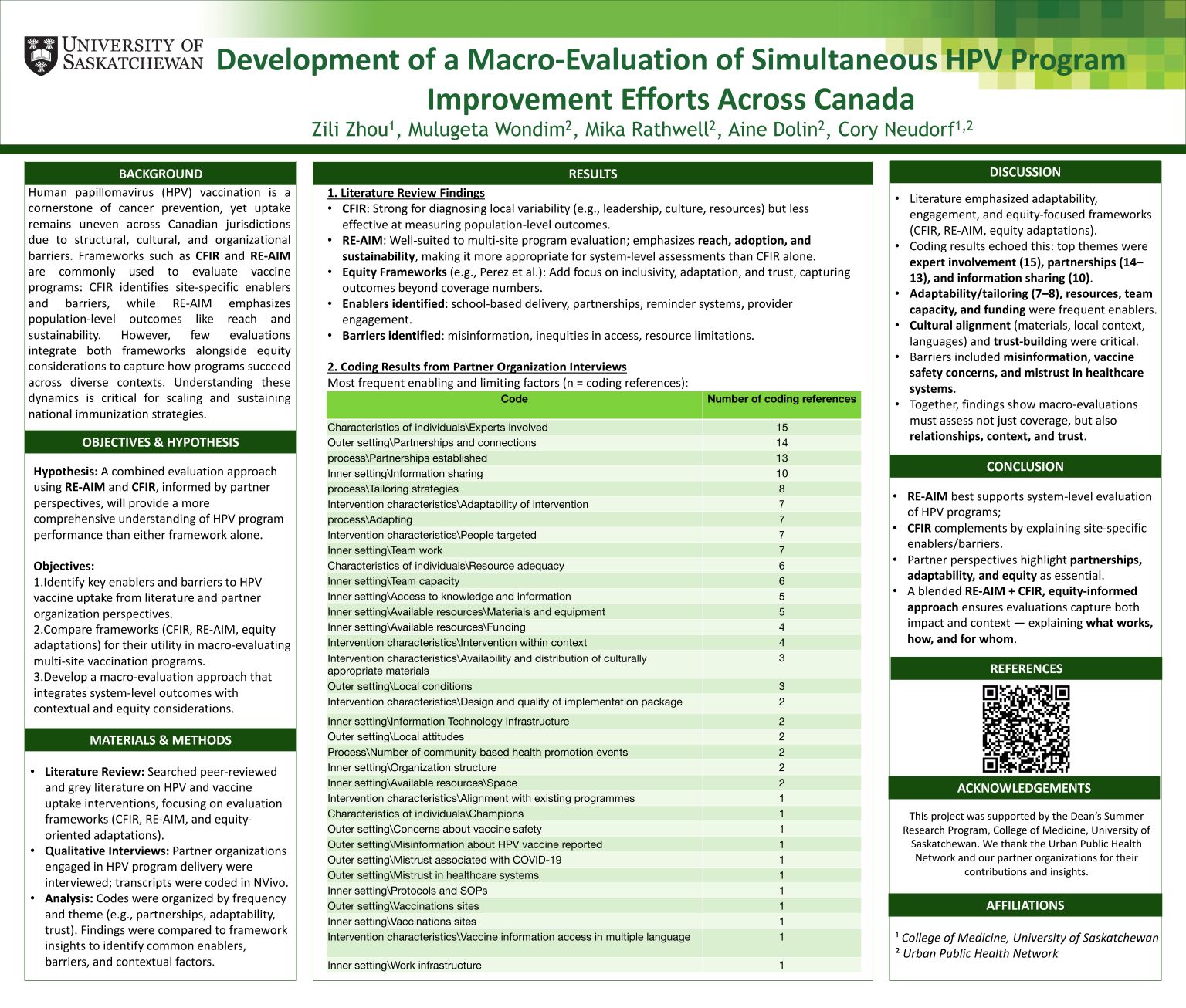
Development of a Macro-Evaluation of Simultaneous HPV Program Improvement Efforts Across Canada
Zili Zhou
Background: Human papillomavirus (HPV) vaccination is a cornerstone of cancer prevention, yet uptake across Canada remains uneven. Frameworks such as the Consolidated Framework for Implementation Research (CFIR) and RE-AIM (Reach, Effectiveness, Adoption, Implementation, Maintenance) provide complementary insights: CFIR explains site-specific enablers and barriers, while RE-AIM emphasizes population-level reach and sustainability. Integrating these perspectives with equity considerations is critical for national program evaluation.
Methods: A literature review was conducted to identify frameworks used in multi-site vaccine program evaluations, focusing on CFIR, RE-AIM, and equity-oriented adaptations. Semi-structured partner organization interviews were coded in NVivo, and themes were analyzed by frequency and alignment with framework constructs.
Results: The literature highlighted adaptability, engagement, and contextual readiness as determinants of uptake, with RE-AIM favored for macro-evaluations of impact. Coding results emphasized expert involvement (15), partnerships (14–13), and information sharing (10) as top enablers. Additional themes included adaptability, team capacity, cultural tailoring, and funding adequacy. Barriers included misinformation, mistrust in healthcare systems, and vaccine safety concerns.
Discussion: Literature and partner perspectives converge on the importance of partnerships, adaptability, and trust-building for effective HPV program delivery. CFIR helps explain contextual variation, while RE-AIM supports evaluation of reach and sustainability. Equity adaptations are needed to capture cultural alignment and trust.
Conclusion: A blended RE-AIM + CFIR approach, enriched with equity considerations, provides a comprehensive framework for macro-evaluating HPV vaccination programs. This ensures evaluations capture both outcomes and context—explaining not only what works, but how, why, and for whom.
